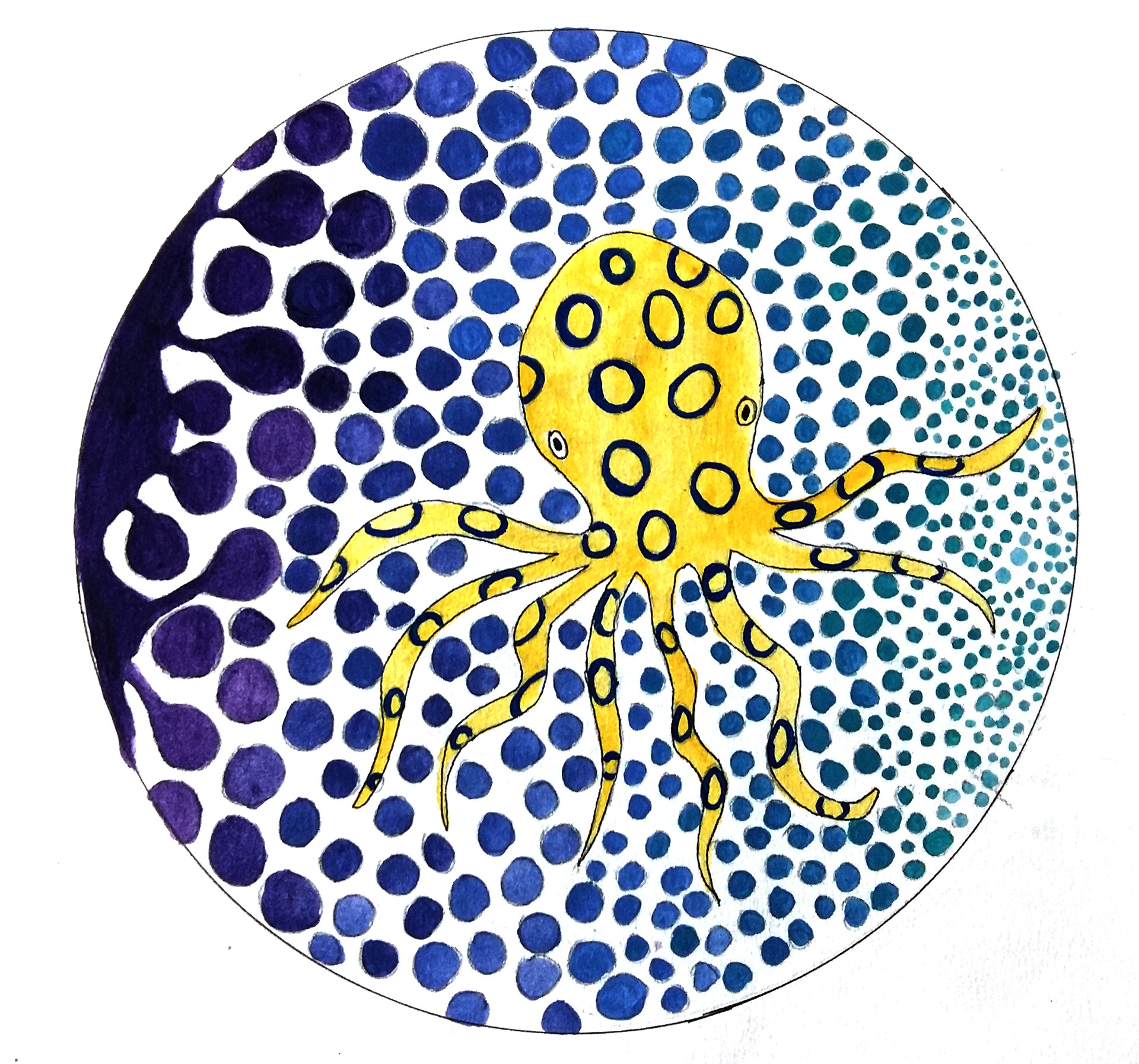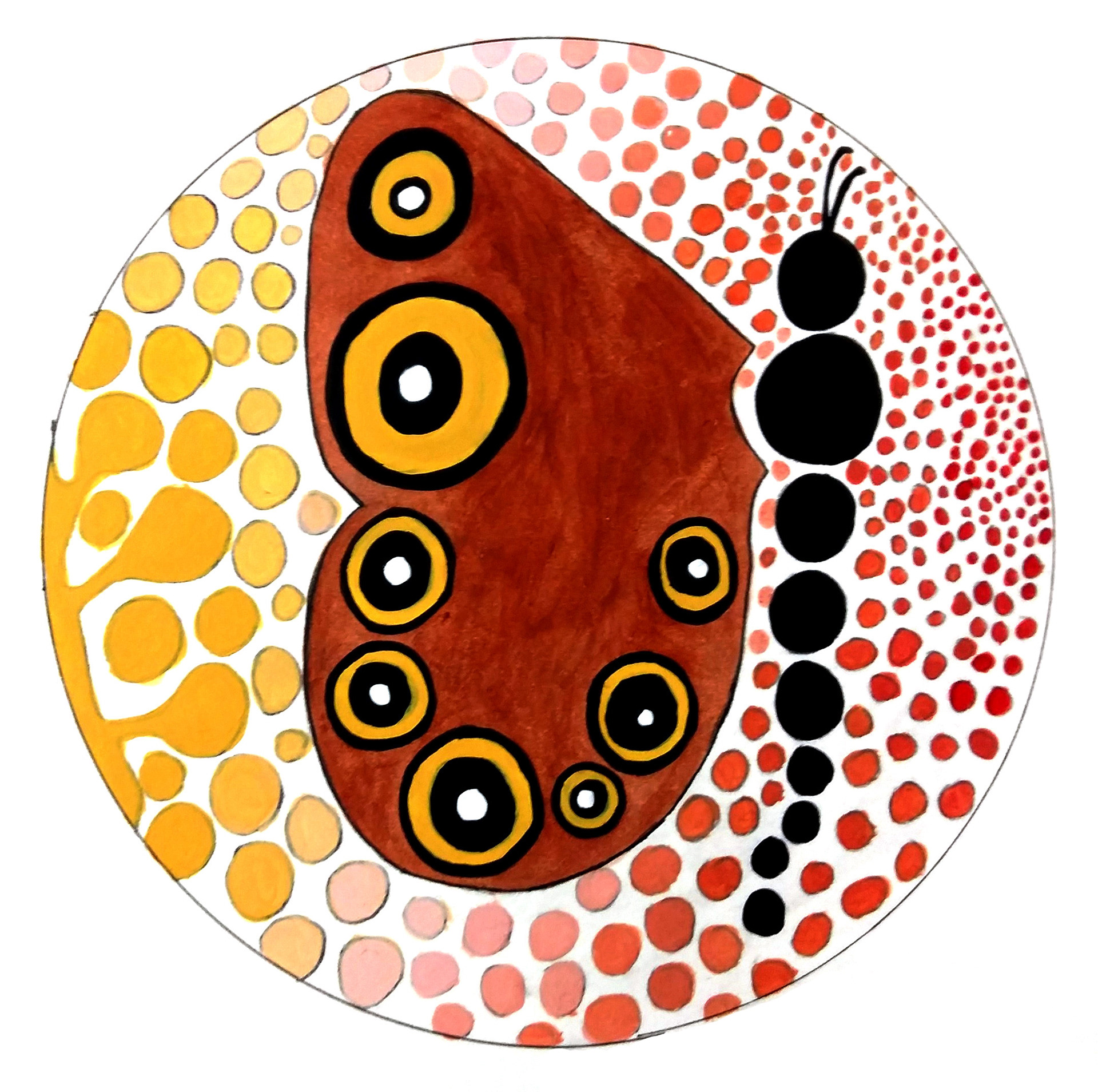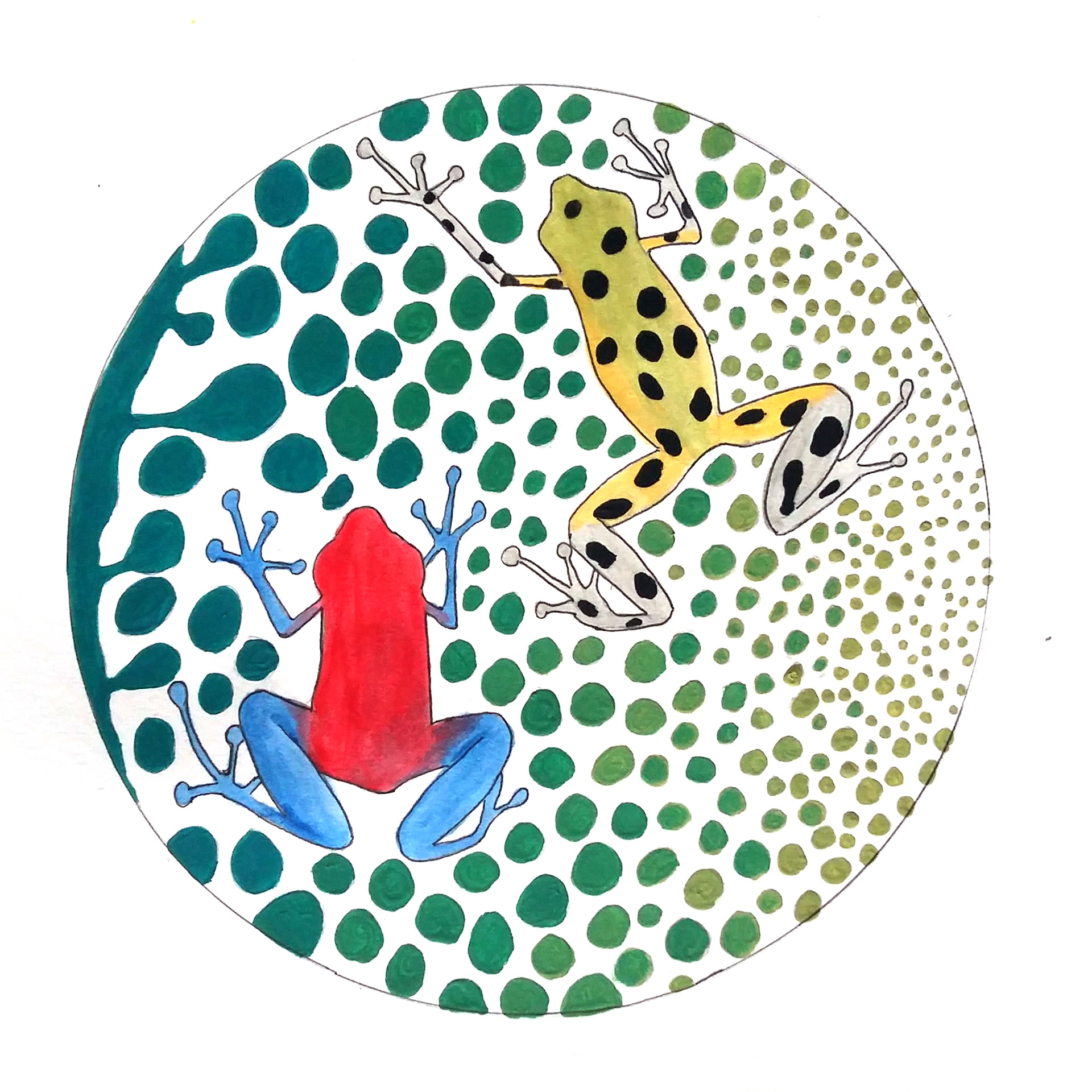


Many species of butterflies possess concentric colored rings on their wings, called eyespots. These are highly variable in size, color, number and position over the wing surface. Eyespots aren't just pretty, decorative ornaments but instead perform many different functions depending on location. Resembling eyes, they can be used to startle predators. They also direct predators' attention to the wing margins, allowing butterflies to escape and, in some cases are used for courtship too.
Poison dart frogs are tiny amphibians found in Central America. They get their name because of their highly toxic secretions that are used to poison Native American blow darts.
Strawberry poison dart frogs comprise a species that exhibits 15-30 different color morphs. This means that in different locations, this one species occurs in various colors and patterns. As with other aposematic animals, they have bright, vivid colors to indicate their toxicity. Here I illustrated two variants, the "blue jeans" morph and the spotted green morph. This is not a direct example but still a very cool phenomenon of color polymorphism.